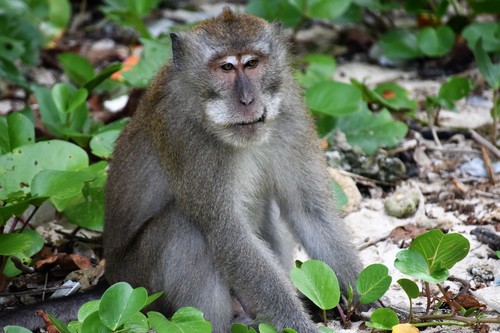
Long-tailed macaque
The long-tailed macaque, Macaca fascicularis, is a social and adaptable primate with a distinctive long tail. Found throughout Southeast Asia, they inhabit forests and urban areas, often near water. Known for their omnivorous diet and swimming prowess, these macaques play a vital role in seed dispersal and ecosystem dynamics.
15-30 years
Lifespan
45360.0 kg
Weight
Height: 38 - 55 cm
Size
Brown, Grey, Yellow, White
Color
30 mph
Top Speed
Endangered
Conservation Status
Decreasing
Population Trend
Characteristics
Macaca fascicularis, commonly known as the long-tailed macaque or crab-eating macaque, is a highly adaptable primate found in Southeast Asia. They are known for their long tails, social behavior, and ability to thrive in diverse habitats including forests and urban areas. These macaques are omnivorous and often seen near water, showcasing their swimming abilities.
Distribution Range of the Long-tailed macaque
Macaca fascicularis, also known as the long-tailed macaque or crab-eating macaque, is native to Southeast Asia. Its geographical distribution includes countries such as Thailand, Malaysia, Indonesia, the Philippines, Vietnam, Cambodia, Laos, Myanmar, and parts of southern China. The species is also found on numerous islands within this range, including Sumatra, Borneo, and the Java Islands.
Long-tailed macaque's Habitat
Environmental Conditions
The long-tailed macaque typically inhabits tropical and subtropical forests. It is highly adaptable and can also be found in coastal mangroves, swamps, and riverine forests. The species is often observed near human settlements, exploiting cultivated areas and urban environments. The climate in its habitat is generally hot and humid, with a distinct wet and dry season.
Ecological Niche
Macaca fascicularis is primarily arboreal but is also known to forage on the ground. It is omnivorous, feeding on a varied diet that includes fruits, seeds, leaves, and small animals. The species plays a role in seed dispersal due to its feeding habits. The long-tailed macaque is highly social, living in large multi-male, multi-female groups, and exhibits complex social structures and behaviors.
Copyright @ Nature Style Limited. All Rights Reserved.
 English
English